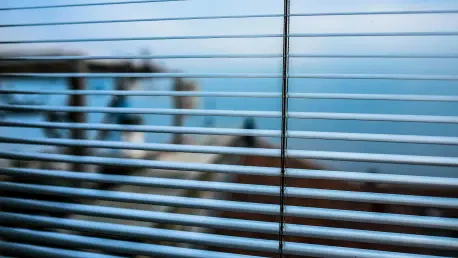Imagine a world where every window in a skyscraper or home doubles as a source of clean, renewable energy, seamlessly blending sustainability with modern design, and transforming urban landscapes into powerhouses of green technology. A groundbreaking development from scientists at Nanjing University in China has brought this vision closer to reality with a clear coating that turns ordinary glass into solar panels. This cutting-edge technology maintains the transparency of windows while harnessing sunlight to generate electricity, offering a dual-purpose solution for energy needs and architectural aesthetics. Known as a “colorless and unidirectional diffractive-type solar concentrator” (CUSC), this innovation uses cholesteric liquid crystals (CLCs) to redirect specific polarizations of sunlight to photovoltaic cells at the window’s edges. With an impressive 64.2 percent of visible light passing through and 91.3 percent color accuracy, the coating ensures that windows retain their primary function while contributing to energy production. This advancement signals a promising step toward integrating renewable energy into everyday structures.
Breaking New Ground in Solar Technology
The significance of this clear coating lies in its ability to balance energy generation with practicality, setting it apart from previous solar window technologies. Unlike earlier solutions that often compromised transparency or were limited in scalability, the CUSC design achieves a remarkable peak energy conversion rate of 38.1 percent under controlled green laser light conditions. Across the full light spectrum, it maintains an overall efficiency of 18.1 percent, demonstrating its potential for real-world application. While the current power conversion efficiency—measuring the total incoming solar energy turned into usable electricity—stands at 3.7 percent, this figure highlights areas for future improvement. The coating’s ability to selectively diffract sunlight using CLC films ensures that windows remain visually unobstructed, making it an attractive option for urban environments where aesthetics are as critical as functionality. This technology could redefine how buildings contribute to energy grids without altering their outward appearance.
A tangible demonstration of this innovation’s potential has already been achieved with a small-scale prototype. Measuring just 1 inch, the prototype successfully powered a small fan, illustrating the coating’s capacity to generate electricity even at a modest size. When scaled to larger windows, such as those in commercial buildings or residential homes, the energy output could be substantial, supporting efforts toward carbon reduction and energy self-sufficiency. The implications of this are vast, particularly for densely populated cities where surface area for traditional solar panels is limited. By turning every window into a power source, this technology could significantly decrease reliance on fossil fuels and contribute to global sustainability goals. Researchers are now focused on optimizing the design to ensure it can withstand long-term use and varying environmental conditions, paving the way for broader implementation in the coming years.
Challenges and Future Prospects
Despite the excitement surrounding this technology, several hurdles must be addressed before it can be widely adopted. The current efficiency rate of 3.7 percent for total power conversion indicates that a significant portion of incoming solar energy is not yet being utilized effectively. Additionally, concerns about the coating’s stability over time and the complexity of manufacturing processes pose challenges to scaling production. Ensuring that the materials can endure diverse weather conditions and maintain their performance is crucial for practical deployment. The research team is actively exploring ways to enhance the durability of the CLC films and streamline fabrication techniques to make the technology more cost-effective. Addressing these technical barriers will be essential to transitioning from laboratory prototypes to commercial products that can be integrated into new and existing buildings worldwide.
Looking ahead, the potential for this solar coating to transform urban landscapes remains a compelling vision. Optical engineers involved in the project have expressed cautious optimism about its scalability and adaptability to various architectural styles. The ability to embed solar technology into windows without sacrificing their aesthetic appeal or primary function represents a significant leap forward in sustainable design. Efforts to improve efficiency and manufacturing are underway, with the goal of making this innovation a viable option for widespread use within the next few years. If successful, this could play a pivotal role in meeting global energy demands while reducing carbon footprints. The journey from concept to application reflects a careful balance of innovation and pragmatism, ensuring that future developments align with both environmental and practical needs.
Reflecting on a Sustainable Path Forward
Looking back, the strides made with this transparent solar coating marked a turning point in how renewable energy was perceived within architectural contexts. The successful creation of a prototype that powered a small device underscored the feasibility of integrating solar technology into everyday structures. The high transparency and efficiency compared to earlier solutions stood as a testament to the ingenuity behind the CUSC design. Although challenges in production and performance persisted, the groundwork laid by the research team offered a clear direction for overcoming these obstacles. Moving forward, the focus shifted to refining materials and processes to enable large-scale adoption. Collaboration between scientists, engineers, and industry leaders became essential to bring this technology to market, ensuring that buildings of the future could harness solar power effortlessly. This development served as a reminder of the potential to address global energy challenges through innovative solutions that blend seamlessly into daily life.









